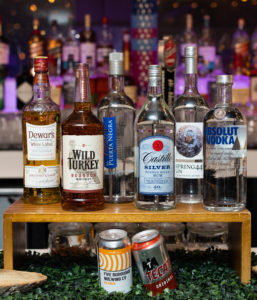MORTON GROVE, IL – Is the occasionally maligned “continental breakfast” a relic of the past? How about those breakfast buffets that have long satisfied famished families at countless hotels? It’s a changing world out there, and experts such as Kevin Kochman (pictured), owner of Kochman Consultants Ltd., are exploring the food and beverage (F&B) landscape within the world of hospitality, looking for the next big trend.
With Summer upon us, HX: The News sat down with Kochman to get an idea of what he’s seeing in the F&B world, and how technology might help solve some of the virus-related conundrums.
 HX: The News: As some hotels, lodges, and resorts begin to open the F&B portions of their businesses to varying degrees, what anecdotes are you hearing?
HX: The News: As some hotels, lodges, and resorts begin to open the F&B portions of their businesses to varying degrees, what anecdotes are you hearing?
Kochman: Breakfast buffets, once a staple of many hotels, are in a state of flux. Many hotels are closing their buffets or changing the way they are done. For example, they will have staff members serving the food to avoid having lots of people touch the serving utensils or getting too close to the food. I’ve heard about a buffet that provides a virtual plate app where guests can drag and drop buffet food items onto a virtual plate, and then have a real-life version delivered to them.
HX: The News: What about those hotel bars/restaurants that have crossover appeal to non-guests?
Kochman: Hotel-based F&B service may be limited due to lower occupancy. If a hotel has a restaurant or bar that’s considered a local favorite, hotel guests will get priority for the limited amount of in-person service available. Resort facilities have the advantage of outdoor area that can maximize dining space and provide more flexible dining options. Of course, cleanliness and hygiene are big issues. Active and visible cleaning crews will help assure guests that they are in a safe setting.
HX: The News: How is the F&B world responding to social distancing guidelines when it comes to seating?
Kochman: F&B managers used to balk at 16-inch allotments between tables, but guests will enjoy the six-foot table spacing. As tempting as it might be for diners to linger, many establishments will turn to ticketing systems and timed dining to maintain crowd control and table turnover. This, in turn, will make traffic more predictable, which makes for easier menu, staffing, and budget planning—thereby maximizing opportunities to make a profit in the new normal.
HX: The News: How would you characterize the financial impact to F&B/hospitality over the last few months?
Kochman: It’s taken a big hit, for sure. Unfortunately, it’s been especially hard on “mom & pop” places with fewer financial reserves. But I’ve seen innovative pivots to maximize for carryout/takeout. Examples: meal kits with cooking instructions rather than cooked meals that get soggy in containers, adding market or pantry items (tomatoes, flour, yeast, even toilet paper) to the carryout menu. I’ve seen patrons band together to support favorite dining spots by collecting money to buy meals and snacks from them that get sent to first responders and hospital workers. It’s not just owners and operators, though, servers have taken a big hit. Carry out and curbside service do not guarantee tips. In addition, because many establishments are operating at lower capacity, many remain furloughed.
 HX: The News: How have bars been affected?
HX: The News: How have bars been affected?
Kochman: Bars have been disproportionately impacted as they have been the last allowed to open for business. Some municipalities have relaxed laws to allow for carryout cocktails and packaged liquor to help support these businesses.
HX: The News: What are some of the unexpected expenses popping up?
Kochman: Some operators have had to revamp their spaces and software to accommodate for the increase in carryout orders, which when done through third-party providers may have hefty fees; and they have new expenses, including PPE to keep their facilities safe for staff as well as patrons.
HX: The News: What is your level of optimism about the re-openings in progress?
Kochman: We’re cautiously optimistic. The good news is that people are eager to embrace dining out again. Restaurants and bars are motivated to serve guests safely so those guests can keep coming back. Many guests prefer outdoor dining to being inside and providers are creatively responding by doing things like turning parking lots into charming al fresco dining spots. Because curbside pickup and delivery services are in demand, many restaurants are trying to, in Disney terms, “plus” the experience. They are forgoing plastic utensils and styrofoam trays with upscale and compostable options, like those made of bamboo, to elevate the experience. I expect a renewed dedication to customer service and cleanliness, which are great trends. Diners will enjoy tidy, well-maintained bathrooms that are fully stocked with soap and disposable hand towels.
HX: The News: What is your level of optimism for the F&B portion of the hospitality industry in the short/long term?
Kochman: We’re still figuring out the short term. Everyone is doing their best to adapt to what feels like ever-changing circumstances. Those who innovate, pivot, and remain flexible to meet the new needs of the world will enjoy the most success. As far as the long term, the company I co-founded, KCL, is celebrating its 35-year anniversary. We’ve seen the industry bounce back from downturns and I’m confident we’ll recover from this. Once the health concerns are managed, there will be an unprecedented amount of pent-up demand.
